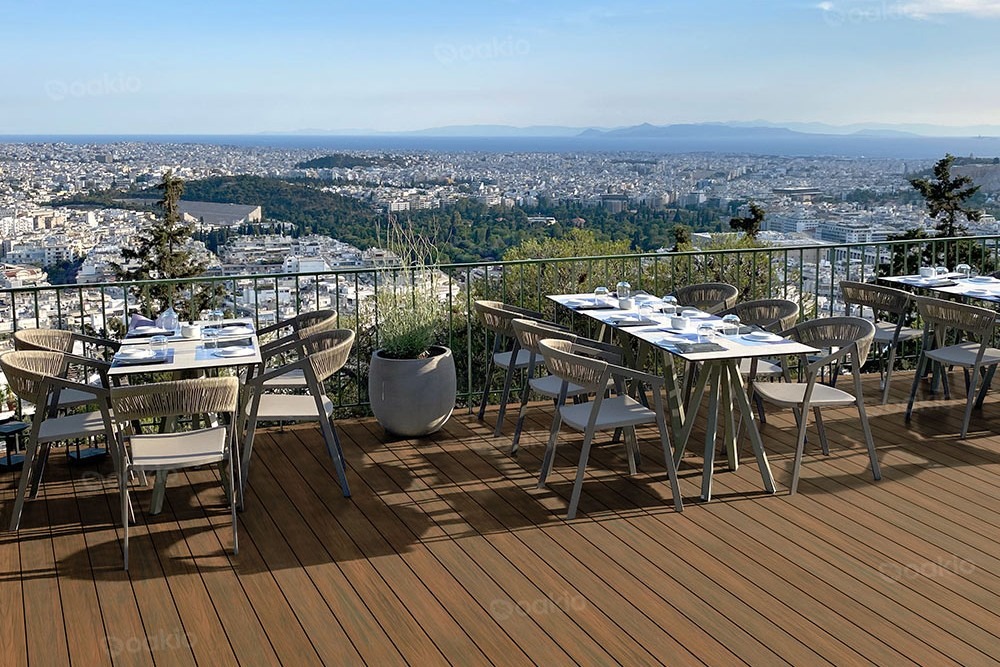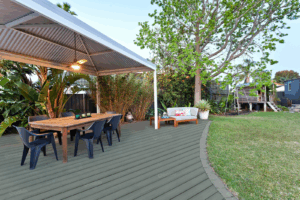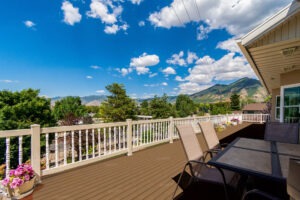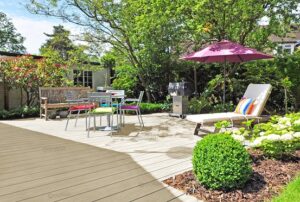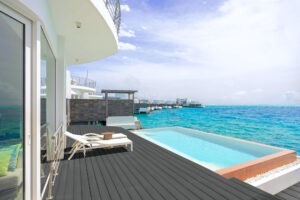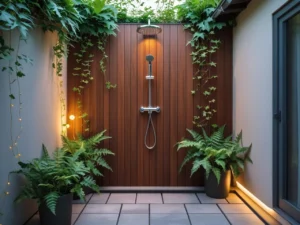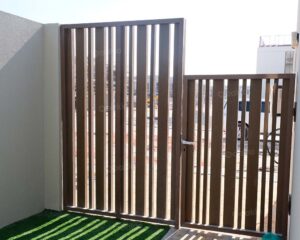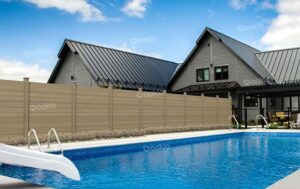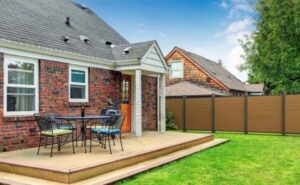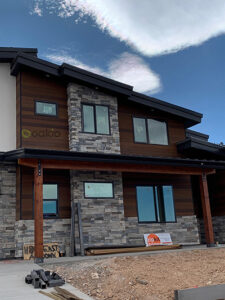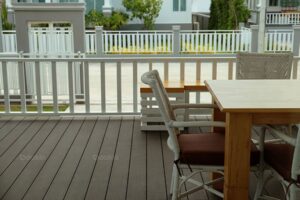Can You Use WPC for Fascia Boards?

Fascia boards are the horizontal boards installed at the edges of roofs or decks. Their primary role is to cover the sides, providing a finished appearance while also protecting the underlying structural elements from weather damage.
Common materials used include wood, PVC, fiber cement, and composite wood. It is essential to make an informed decision about the right material, as durability, maintenance requirements, and aesthetics can vary significantly. Choosing the appropriate material for your needs can help prevent many potential issues in the future.
If you prefer a material with a natural look, wood may seem like the ideal choice. However, it requires ongoing maintenance, including staining, sealing, and cleaning, which can be quite time-consuming. Wood Plastic Composite (WPC) was developed to address these challenges.
What is WPC (Wood Plastic Composite)?
Wood plastic composite, commonly referred to as composite wood, is a blend of wood fibers and recycled plastic. This durable and eco-friendly material combines the visual appeal of wood with the practicality of plastic. It is resistant to rot and warping, allowing you to avoid spending weekends on repairs or replacements.
Composite wood has proven to be a long-lasting and low-maintenance alternative to traditional wood materials. In particular, composite wood fencing is engineered to endure moisture, frost, and mold.
Additionally, it is highly resistant to damage from prolonged sun exposure and pests seeking shelter. This makes it an appealing option as it protects your home from excessive rain and helps deter insects from nesting.
Can You Use WPC for Fascia Boards?
Absolutely, the answer is yes. WPC is indeed an excellent choice for fascia boards.
WPC has gained popularity recently for a range of outdoor uses, thanks to its impressive durability and minimal maintenance requirements. This material is designed to endure severe weather conditions, making it a perfect option for locations prone to moisture, including eaves, roof edges, wall cladding, and deck sides.
Manufacturers like Oakio can provide an impressive selection of dimensions, finishes, and colors. The most popular sizes include 71×11 mm and 140×11 mm, while the color palette features options such as amber, dark grey, and smoke white.
Advantages of Using WPC Fascia Boards
The appeal of WPC fascia lies in its durability and low-maintenance requirements. Made from materials that are moisture-resistant, rot-proof, insect-resistant, and weatherproof, they also have the added benefit of being environmentally friendly, as they are often produced from recycled materials.
There is no need for regular painting, staining, or sealing. The boards only require occasional cleaning to maintain their aesthetic appeal. With a variety of colors, wood-like textures, and customizable finishes available, fascia boards on the house can enhance almost any architectural style.
WPC boards can last for over 20 years, depending on the brand and installation. For instance, brands like Oakio offer warranties of up to 25 years. Although the initial cost may be higher, their durability and low maintenance can lead to significant savings over time.
Disadvantages and Considerations
When deciding between traditional wood and WPC, it’s important to remember that the upfront cost of WPC can be a hurdle for those on a tight budget.
Although WPC is crafted to replicate the appearance of real wood, it may not consistently achieve the same level of authenticity in look and texture. For those who value the aesthetics of their exterior finishes, this difference can be significant.
The material characteristics of WPC mean that scratches and minor surface damage can be challenging to repair, and it can retain heat longer when exposed to direct sunlight. However, some products come with protective coatings specifically designed to improve scratch resistance and prevent heat buildup.
Installation of WPC Fascia Boards
The typical process for installing fascia boards involves several key steps: drilling pilot holes for a clean and precise installation, ensuring proper spacing to accommodate thermal expansion and ventilation, and securely fastening the boards with stainless steel screws.
It is important to use only high-quality, corrosion-resistant screws and fasteners to securely attach the fascia. Drilling pilot holes is crucial to avoid splitting, particularly when working with composite materials such as WPC.
When attaching the fascia, using complementary components such as joists, trims, or starter clips can enhance the security of the installation and can contribute significantly to the overall integrity of the decking structure.
It is important to account for expansion gaps to allow for material movement due to temperature fluctuations, which helps prevent warping or buckling caused by extreme heat or cold.
To facilitate a smoother installation, ensure that surfaces are clean and avoid any harsh chemicals. After securing the fascia, verify the durability of the fastenings.
By following these guidelines, you can achieve a polished, durable, and visually appealing finish that enhances the longevity of your outdoor spaces. Proper installation not only improves the overall appearance but also supports the structural integrity of your decking project.
Comparison with Other Fascia Board Materials (100 words including table text)
When selecting the right material, it’s essential to evaluate its durability, maintenance, cost, aesthetics, and environmental impact. This will help you make an informed decision that meets your needs.
Below is an overview of other common materials:
| Material | Durability | Maintenance | Cost | Aesthetic Flexibility | Environmental Impact |
| Wood | Moderate (subject to rot) | High (painting, sealing) | Moderate | High (natural look) | Renewable but less durable |
| PVC | High (waterproof) | Low | Low | Limited | Less eco-friendly |
| Fiber Cement | Very high (long lifespan) | Low | High | Moderate | Good (inert materials) |
| WPC (Composite) | High (rot & insect proof) | Low | Moderate-High | High (custom colors/textures) | Eco-friendly often recycled |
Wood provides a natural aesthetic but requires regular maintenance due to its susceptibility to rot and insects. Although it is a renewable resource, it tends to lack long-term durability, which may necessitate more frequent replacements.
PVC is recognized for its high durability and waterproof properties, requiring minimal maintenance. However, its limited aesthetic options and lower environmental friendliness may not appeal to all homeowners.
Fiber cement offers an exceptionally long lifespan and also demands little maintenance. While it has higher upfront costs, it presents a wide variety of options and is environmentally neutral since it is an inert material.
WPC is highly resistant to rot and insects. It offers low maintenance needs and a high degree of customizability. Because it is made from recycled materials, it can be an eco-friendly choice.
Maintenance Tips for WPC Fascia Boards
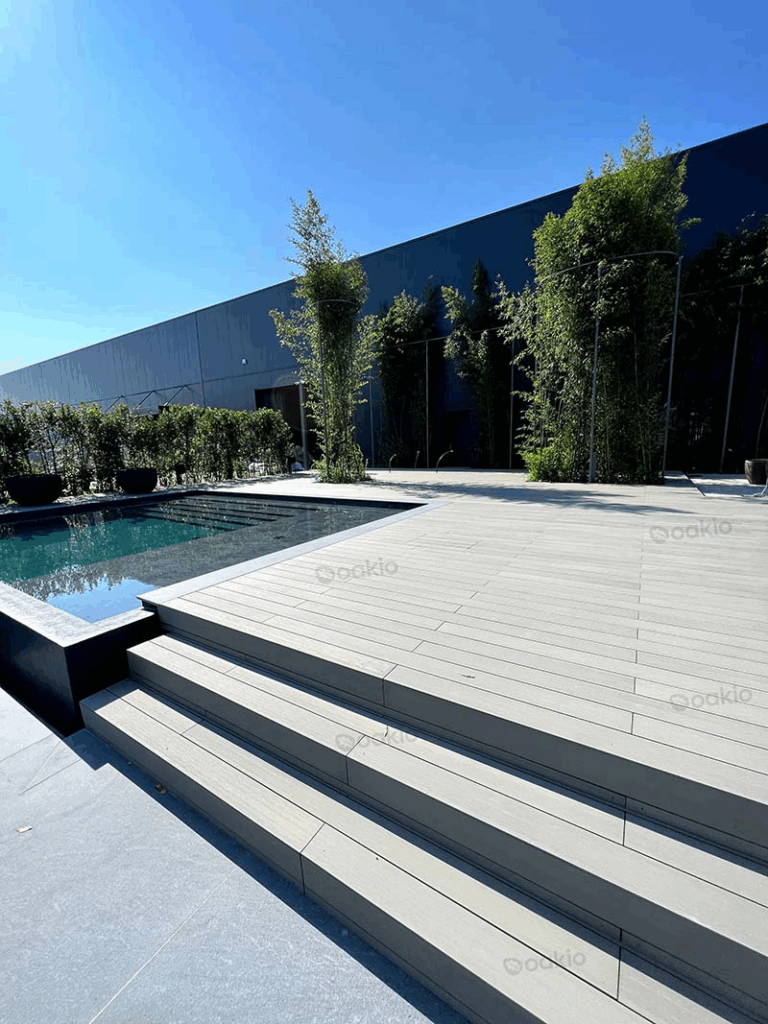
It is advisable to clean the railings periodically using mild soap and water. Avoid using bleach or abrasive cleaners, as these can damage the protective surface coating. The frequency of cleaning should be based on the color of the railings; darker shades can conceal dirt and grime more effectively, while lighter shades may require more frequent attention to prevent staining.
Promptly remove any oil or grease spills from the surface to prevent staining. This can be accomplished using warm, soapy water or an all-purpose cleaner if water alone is insufficient.
Regular inspections and tightening of fasteners are essential to ensure that the fascia remains secure. Conducting routine inspections makes it easier to identify issues such as rust, distortion, or loosening. You can also check the tightness of connections by striking a metal bolt with a hammer. If it sounds hollow, it is likely loose.
Conclusion
Wood plastic composite fascia boards are becoming increasingly popular among homeowners and builders because they last longer and require less maintenance than wooden options. These composite boards resist warping, rotting, and insect damage, making them ideal for harsh weather conditions.
When choosing your fascia material, consider factors such as appearance, budget, and durability. WPC boards are available in various colors and finishes, allowing them to effectively mimic real wood, allowing you to enhance your home’s exterior without compromising on performance.
Although the initial cost of WPC may be higher than that of wood, its longevity and lower maintenance requirements make it a more economical choice over time. Their durability means less upkeep, ultimately saving you time and money
Are you interested in exploring your options? You can request a free sample of high-quality outdoor fascia material from Oakio today. This will allow you to examine the color and texture up close and see how it looks in person. Who knows? You might find the perfect fit for your outdoor vision!
Trending Reading
What Are the Differences Between the WPC Board and PVC Board?
[2025 Update] How Long Does WPC Decking Last?
